
Susan Cummins: Daniel, you are having quite a moment right now, with a new book, Daniel Kruger: Between Nature and Artifice, Jewellery 1974–2014, and a series of four museum shows, plus of course this exhibition with Sienna Gallery. How long have you been planning these events and how did the plans develop?
Daniel Kruger: The planning started a long time ago because the exhibitions and book were originally scheduled for 2010. I had approached Cornelie Holzach of the Schmuckmuseum in Pforzheim about doing an exhibition there. She agreed, and this was a particular honor as I had already had an exhibition there in 1984 and this would be my second show at this museum. After that I asked Yvonne Joris of the Stedelijk Museum s’-Hertogenbosch in the Netherlands (she died last year) if she would give the exhibition a second venue. There too I had had solo exhibitions in the past initiated by Yvonne in the two municipal museums preceding the present Stedelijk Museum in s’Hertogenbosch: 1981 at the Dienst Beeldende Kunst, De Moriaan and 1994 at the Museum het Kruithuis “Five Stones and a Small Feint”. The project grew with the Goldschmiedehaus in Hanau to where my exhibition of 1984 in Pforzheim had followed from Pforzheim and the Grassi Museum in Leipzig that now will be the initiator of this series of exhibitions. Between one thing and another, the shows were postponed and the order of the exhibitions changed around. This gave me a lot of time and leisure to do the planning.
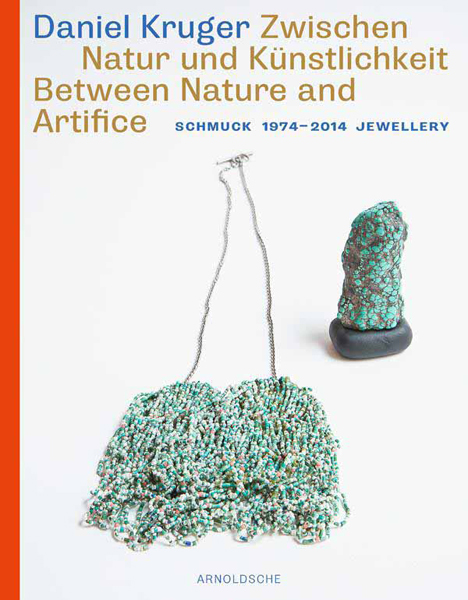
Susan Cummins: Daniel, you are having quite a moment right now, with a new book, Daniel Kruger: Between Nature and Artifice, Jewellery 1974–2014, and a series of four museum shows, plus of course this exhibition with Sienna Gallery. How long have you been planning these events and how did the plans develop?
Daniel Kruger: The planning started a long time ago because the exhibitions and book were originally scheduled for 2010. I had approached Cornelie Holzach of the Schmuckmuseum in Pforzheim about doing an exhibition there. She agreed, and this was a particular honor as I had already had an exhibition there in 1984 and this would be my second show at this museum. After that I asked Yvonne Joris of the Stedelijk Museum s’-Hertogenbosch in the Netherlands (she died last year) if she would give the exhibition a second venue. There too I had had solo exhibitions in the past initiated by Yvonne in the two municipal museums preceding the present Stedelijk Museum in s’Hertogenbosch: 1981 at the Dienst Beeldende Kunst, De Moriaan and 1994 at the Museum het Kruithuis “Five Stones and a Small Feint”. The project grew with the Goldschmiedehaus in Hanau to where my exhibition of 1984 in Pforzheim had followed from Pforzheim and the Grassi Museum in Leipzig that now will be the initiator of this series of exhibitions. Between one thing and another, the shows were postponed and the order of the exhibitions changed around. This gave me a lot of time and leisure to do the planning.
Why did you decide to do this retrospective now?
Daniel Kruger: I had made a large body of work over the years and had no documentation other than the catalog of the exhibitions at the Schmuckmuseum Pforzheim and the Goldschmiedehaus Hanau from 1984, and a small, very beautiful book published by the Stedelijk Museum s’-Hertogenbosch for the exhibition I had there in 1994. Both were no longer available. So it was time to have a book that covered my oeuvre up ’til now.
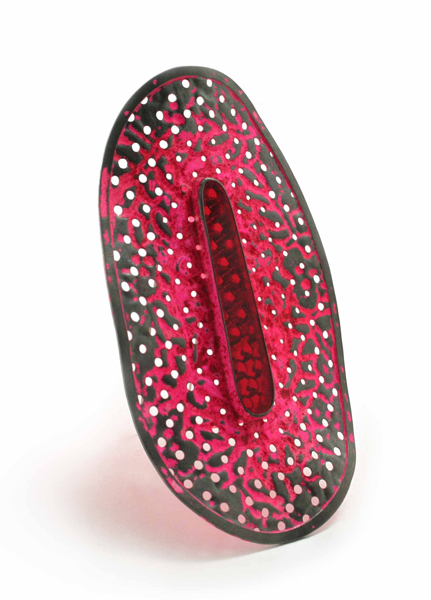
What do you hope to accomplish with these exhibitions and book?
Daniel Kruger: It is a summing up of what I have done and where I am at present and how I got where I am. It will be good to see pieces that are in museum and private collections again and to bring many pieces from throughout this span of time together and show them to a broader public.
The exhibitions at the Grassi Museum and the Stedelijk Museum s’-Hertogenbosch will, in addition to the jewelry, show my ceramic work. In 1988 I started working seriously in this discipline until 2005, when I gave it up in favor of the professorship at the Burg Giebichenstein College of Art in Halle. My ceramics haven’t had much exposure, so I am very pleased to be able to also show this side of myself.
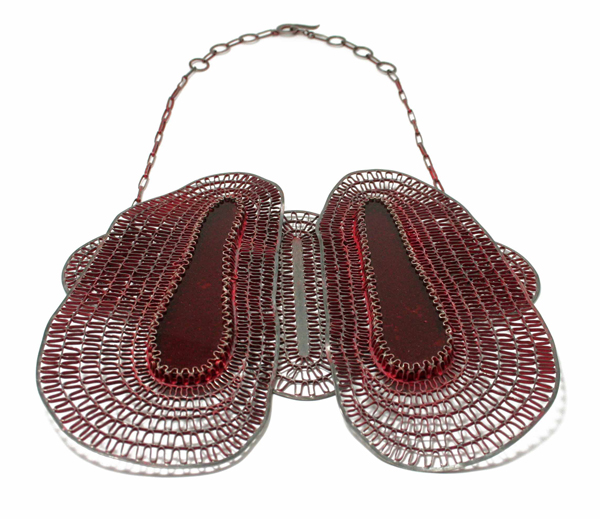
Daniel Kruger: I enjoy the act of making, of working with my hands, and am fortunate that I have an aptitude for skills and can grasp methods quickly or invent the methods I need. Added to that, I have always been interested in objects, especially those made in other cultures and periods. Together with my interest in materials, my intuitive understanding of methods and processes, and my interest in artifacts, I have a large repertoire of references that I can draw on. There are so many things I am interested in and would like to investigate that I tend to jump from one theme to another, to return to past themes to carry on an investigation I feel can be extended.
There is little difference for me between “precious” and poor/everyday materials. All materials (and things) have qualities worth looking at and, ultimately, worth using in order to say something. I’m drawn to what there is to be found in nature (the macro as well as the micro cosmos!). I am fascinated by what people have made and make with the resources nature provides, and humankind’s ingenious inventiveness and skills. On the one hand there’s the beauty of a jet engine for propelling an aircraft, involving highly complex design and sophisticated technology, specialized tools and machines, and specified materials for its construction; on the other hand, you have the directness and simplicity of a porridge whisk made by an African housewife using a stick and a few pieces of scrap wire.
I’ve always known that I have both a male and a female side but had never consciously thought of it being so apparent in my work until Jorunn Veiteberg pointed that out in the article she wrote for my book. I don’t quite know what to do with this knowledge but I rather like it being that way.
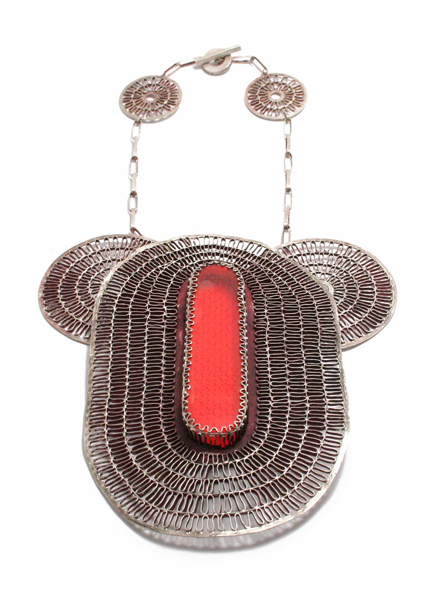
Daniel Kruger: Recurrent in my work are patterns, rhythms, symmetry, radial designs, spheres, discs—the circle is predominant—scrolls, dots, as well as texture and material qualities, flowers. Elements are usually ordered in rows or pairs and of course there is the erotic aspect.
I asked Helmut Stabe and Juliane Mahn to do the layout of the book; both are graduates from the Artist-Book class at the Burg Giebichenstein, where I teach jewelry. Juliane was responsible for ordering the images and chose to arrange them in groups rather than chronologically. I so admire how she did this, putting together themes and moving backward and forward in time, with one group of work leading to the other. Her classification, if one can call it that, deals with the different sensual qualities that can be found in my work.
How do you see the world changing in response to your work over the last 40 years?
Daniel Kruger: In 40 years a lot has happened and young jewelry makers do and see thing differently than when I started out. In a way it’s a very different world I live in today and therefore the response to my work should be different from then.
We all keep our styles while developing and taking up new questions and seeing and understanding things in a new way. I am interested in work by young jewelry makers and learn a lot from them. One of the exciting aspects of teaching and working with young people is that I encounter so many different interests and approaches that widen my view and inspire and renew my work.
How my students see my work, I do not know. I am, however, astonished when every so often young jewelry makers whose approach to jewelry is completely different from mine tell me that they admire what I do. I would imagine that they would prefer more experimental new work.
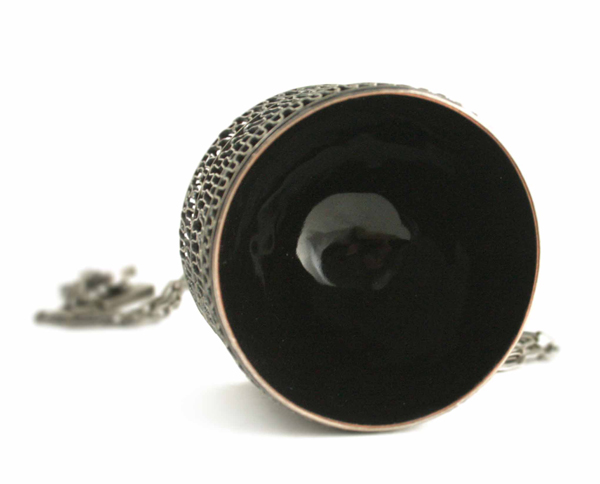
Daniel Kruger: I grew up on a farm in what was then South-West Africa, now called Namibia. There were always things being made or fixed, be it baking bread or putting up a fence, darning socks or repairing a windmill. Making things oneself, using manual skills, and being inventive were part of farm life then. This may well have had an influence on me.
From early childhood I made things and improvised toys from what I found. At about the age of 14 I was sent to a school in Cape Town. In the afternoons I attended an art center for children where ceramics, painting, textile printing, and jewelry were taught. I eventually did art as a school subject. It was apparent to me that I would choose to do something in this line professionally. Jewelry was the choice in the end, but I can’t explain why. Perhaps it was because of the intricacy and the small scale and its private nature. Perhaps also because of the fascination gemstones had for me, and the grandness of the jewelry I saw in books.
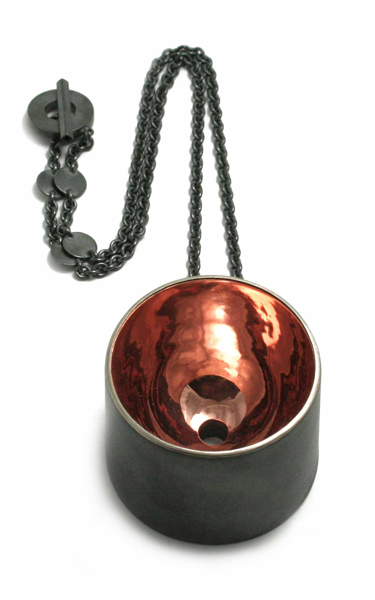
Daniel Kruger: I admire many artworks and jewelers across the ages, and what or who is most present in my mind keeps changing. My most recent impressions will of course be from my trip to Lenox. While there I was able to visit the Clark in Williamstown and see Abstract Painting, 1950–1975 at the National Gallery of Art in Washington, D.C., and ancient ritual bronzes and jades from the Shanghai Museum. At the MFA Boston I saw, among a lot of other memorable things, the 18th-century Meissen porcelain animals by Johann Gottlieb Kirchner. What interests me is that which goes beyond the physical everyday world in the abstract paintings, the introspective and the meditative quality of these works; the intricately decorated ritual Chinese vessels and the mysterious symbols underlying a ritual order I don’t understand and the simple beauty of the jade axes and discs; the realistic yet fantastic, clumsy yet dignified Kirchner animals with their cracks and blemishes—they are from a strange and wonderful world.
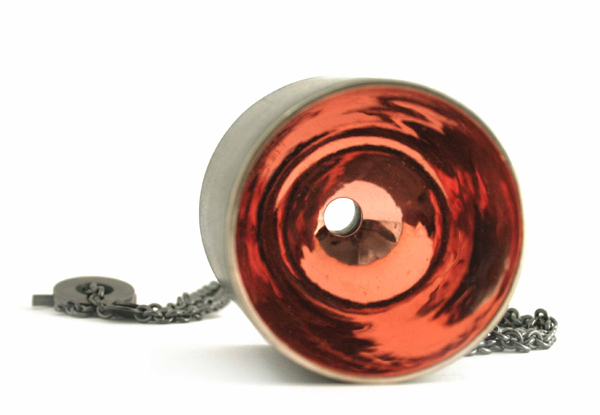
Daniel Kruger: Jewelry.
Thank you.




